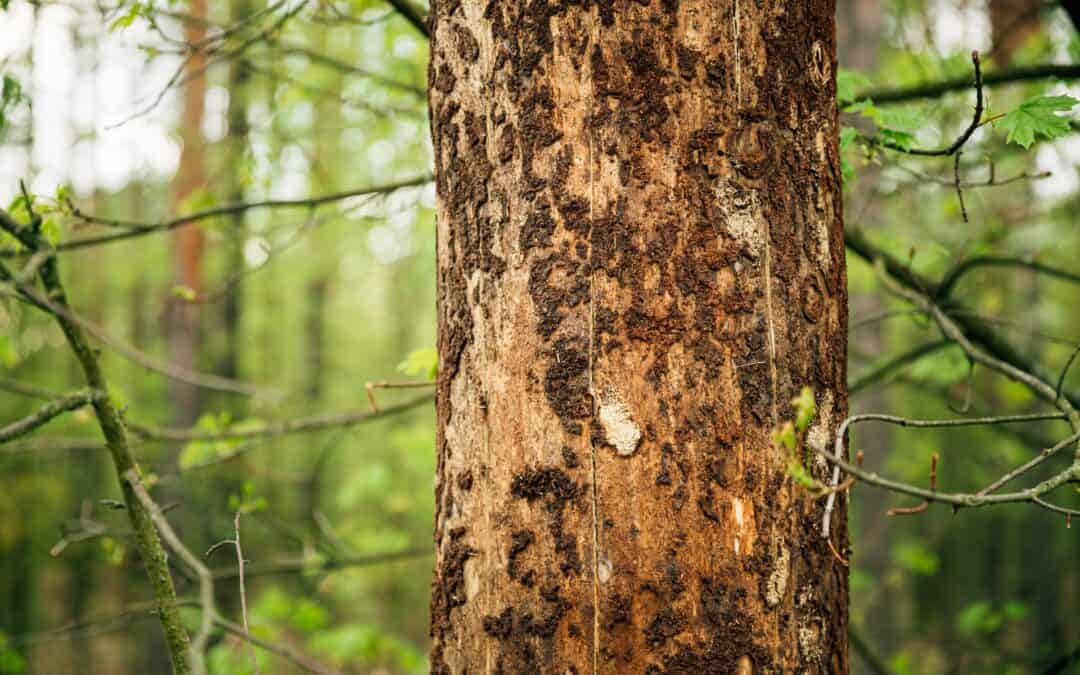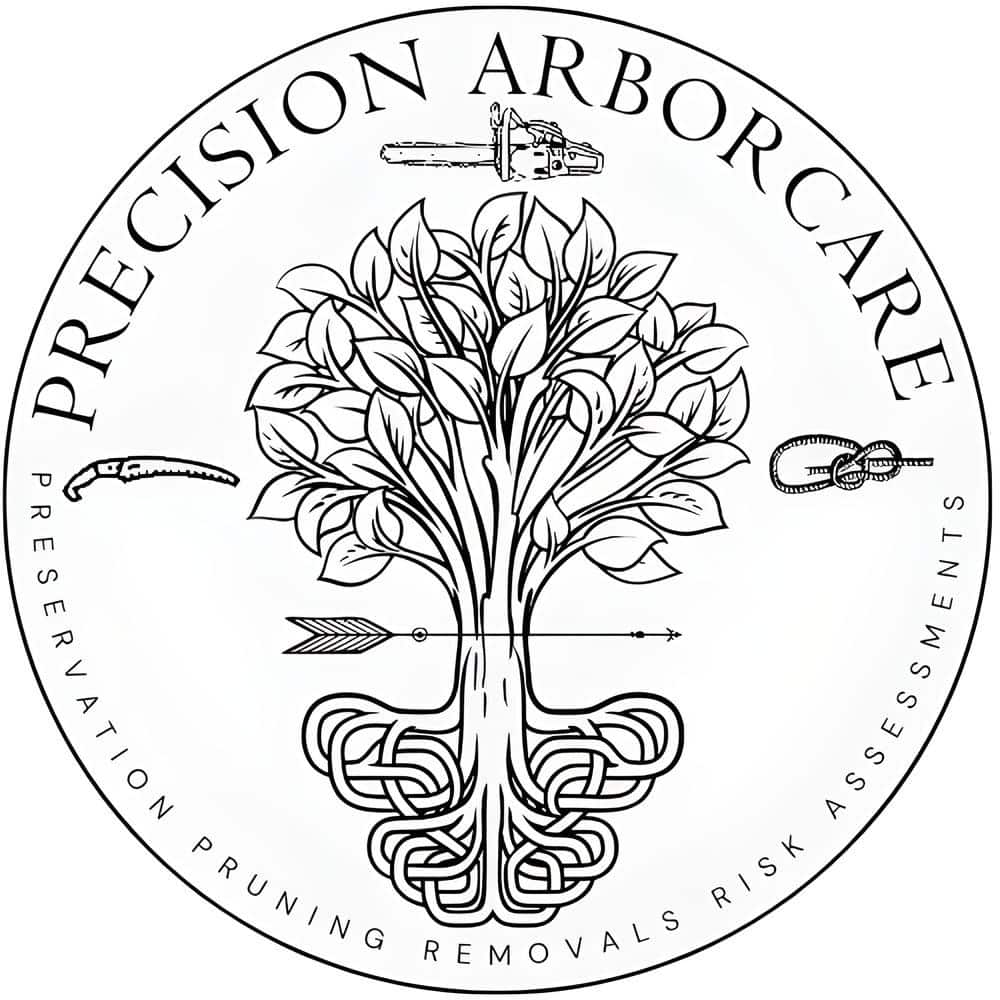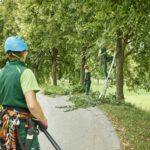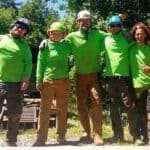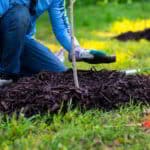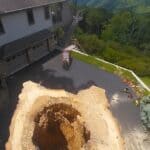Trees, like all living things, can become ill. Tree diseases can devastate entire landscapes if left unchecked. Diagnosing these diseases accurately is crucial to the health and survival of trees, and this is where the expertise of an arborist comes into play. An arborist’s approach to diagnosing tree diseases particularly within the Asheville region involves not just recognizing the signs of illness but understanding the underlying causes and providing solutions that ensure trees thrive for years to come.
How Arborists Diagnose Tree Diseases
Diagnosing tree diseases is both an art and a science. An experienced arborist, for instance, might encounter a tree with wilting leaves and suspect root rot. But, rather than jumping to conclusions, they dig deeper—both figuratively and literally—examining the roots, soil conditions, and even the surrounding vegetation. It’s not just about what’s visible; it’s about what’s happening beneath the surface. This holistic approach ensures that the diagnosis is accurate and that the recommended treatment addresses the root cause.
- Arborists often begin by visually inspecting the tree, looking for obvious signs of distress like discoloration, unusual growths, or dieback.
- Soil tests are conducted to check for issues like nutrient deficiencies or the presence of harmful pathogens.
- Advanced diagnostic tools, such as resistographs or sonic tomography, may be used to assess the internal condition of the tree.
Recognizing Common Tree Diseases
Arborists are trained to identify a variety of tree diseases, each with its own set of symptoms and challenges. Some of the most common diseases they encounter include Dutch elm disease, which has wiped out millions of trees across North America, and oak wilt, a deadly fungal disease that spreads through root grafts and insect vectors. Identifying these diseases early is critical because once they take hold, they can be difficult, if not impossible, to eradicate.
- Dutch elm disease is characterized by yellowing leaves that wilt and eventually die, often starting at the top of the tree.
- Oak wilt causes rapid leaf loss, with leaves turning brown from the edges inward.
- Root rot, which can affect a wide range of tree species, typically leads to stunted growth and a general decline in the tree’s health.
The Early Signs Arborists Watch For
When it comes to tree diseases, early detection is key. Arborists are trained to spot the subtle signs that a tree is in trouble before the disease becomes widespread. Wilting leaves, discolored foliage, and unusual bark patterns can all be early indicators of disease. By catching these symptoms early, an arborist can recommend treatments that prevent the disease from spreading and, in some cases, even reverse the damage.
- Discolored leaves that appear in unusual patterns may signal a nutrient deficiency or a viral infection.
- Bark lesions, cracks, or unusual patterns can indicate fungal infections or insect infestations.
- Reduced leaf size or delayed leafing out in spring can be signs of stress or disease in the tree’s root system.
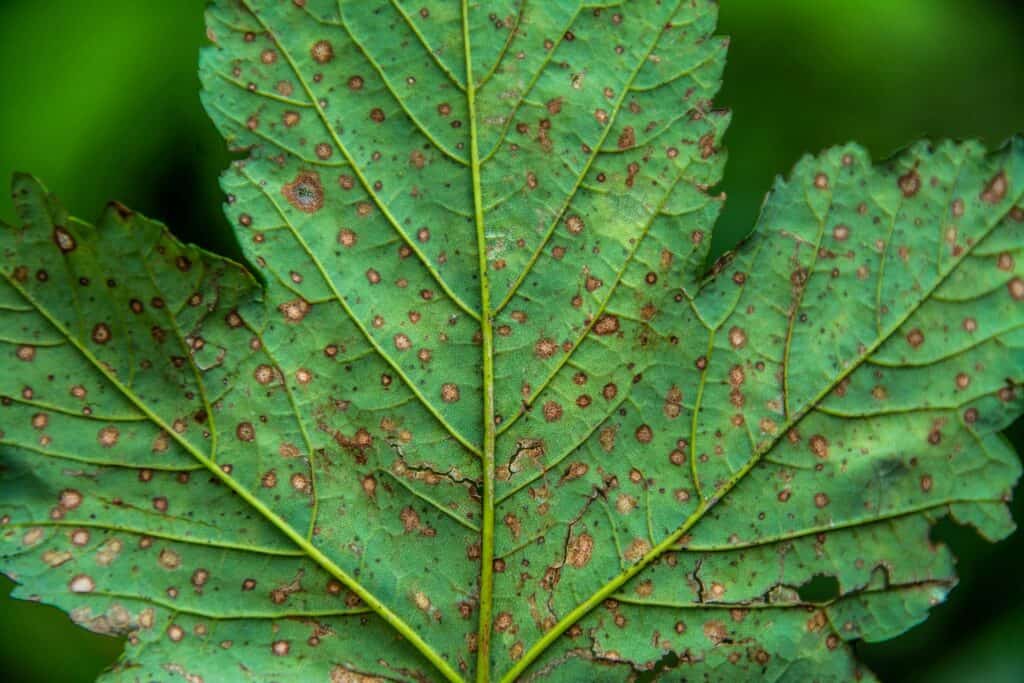
Advanced Tools Arborists Use to Diagnose Diseases
While a skilled arborist relies heavily on their knowledge and experience, they also use advanced tools to aid in diagnosing tree diseases. These tools allow them to assess the internal structure of a tree, identify hidden decay, and determine the overall health of the tree. For example, a resistograph drills a small, non-invasive hole into the tree to measure its resistance, which can reveal areas of decay or weakness that aren’t visible from the outside. Similarly, sonic tomography uses sound waves to create an image of the tree’s internal structure, helping the arborist spot problems early.
- Resistographs help detect internal decay or cavities by measuring resistance as a small needle penetrates the wood.
- Sonic tomography creates a visual representation of a tree’s internal structure using sound waves.
- Soil analysis tools can identify nutrient deficiencies, pH imbalances, or the presence of harmful pathogens in the soil.
Why Professional Diagnosis Is Essential
Attempting to diagnose tree diseases without professional training is risky. Misdiagnosing a disease can lead to ineffective treatments, which not only fail to address the problem but can actually make it worse. Arborists have the knowledge and tools needed to diagnose tree diseases accurately, ensuring that the appropriate treatment is applied. This expertise can make the difference between a tree’s recovery and its eventual decline. When a tree shows signs of distress, consulting an arborist is the best course of action to ensure it receives the care it needs.
- Incorrectly treating a tree can lead to unnecessary expenses and further damage to the tree.
- Arborists can identify not just the disease but also the underlying causes, such as poor soil conditions or environmental stressors.
- Professional diagnosis ensures that treatments are tailored to the specific needs of the tree, improving the chances of recovery.
What Arborists Do After Diagnosing a Disease
Once a tree disease has been diagnosed, the arborist’s work is far from over. The next steps involve creating and implementing a treatment plan tailored to the specific needs of the tree. This plan might include pruning diseased branches to prevent the spread of the infection, applying fungicides or insecticides, and recommending changes to the tree’s environment, such as improving drainage or adjusting the soil pH. The goal is not just to treat the disease but to restore the tree to full health and prevent future problems.
- Pruning infected branches can prevent the disease from spreading to healthy parts of the tree.
- Fungicide or insecticide treatments may be necessary to eliminate the disease-causing agents.
- Environmental adjustments, such as improving soil conditions or watering practices, can help strengthen the tree and prevent future disease.
Preventing the Spread of Tree Diseases
One of the primary roles of an arborist is to prevent the spread of tree diseases. The hemlock woolly adelgid, an invasive insect, has infested hemlock trees across North Carolina, including the Asheville area. Since 2018, more than 41,000 hemlocks have been treated to combat this pest, with 2,276 treated in conservation areas in 2021 alone. The HWA has caused significant mortality in untreated hemlock stands, leading to ecological impacts on forest composition and health. This involves not just treating the affected tree but also taking steps to protect other trees in the area.
Arborists may recommend quarantine measures, such as removing and destroying severely infected trees, to prevent the disease from spreading. They may also suggest preventive treatments, such as regular inspections and the application of protective sprays, to keep other trees healthy.
- Quarantine measures can include removing infected trees and sterilizing tools to prevent the spread of disease.
- Regular inspections help catch potential problems before they become widespread.
- Preventive treatments, such as protective sprays, can help protect healthy trees from infection.
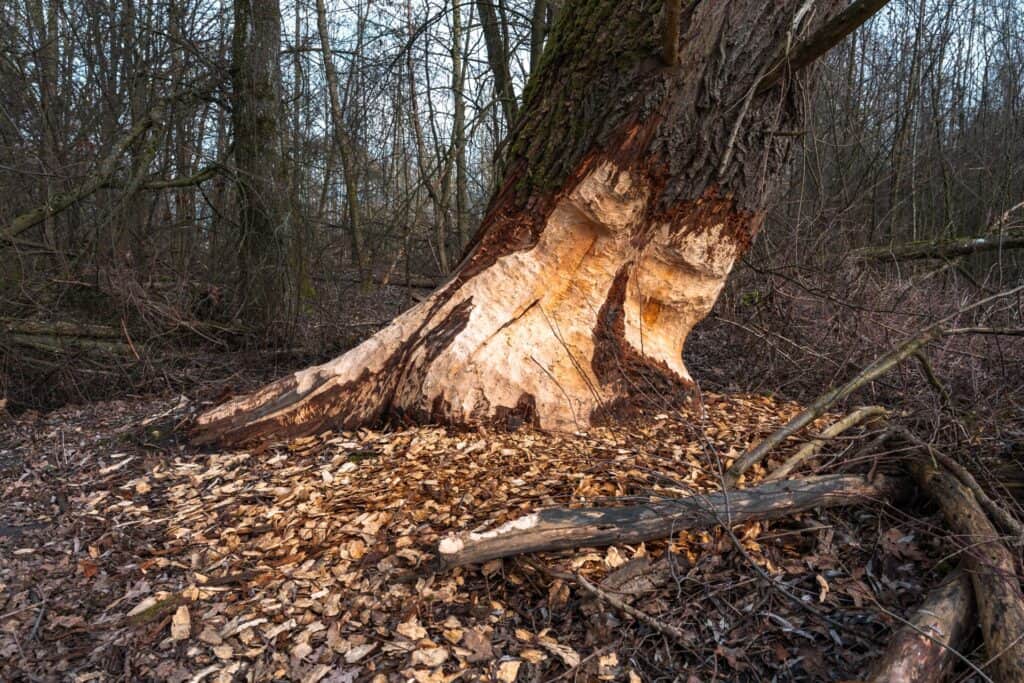
Selecting the Right Arborist for Disease Diagnosis
Choosing an arborist is an important decision that can have a significant impact on the health of your trees. When selecting an arborist, it’s essential to look for someone with the right credentials, such as certification from the International Society of Arboriculture (ISA). It’s also important to choose an arborist with experience in diagnosing and treating tree diseases, as this requires a specialized skill set. Checking references and asking for examples of past work can help ensure you’re making the right choice.
- ISA certification indicates that an arborist has met rigorous standards for knowledge and professionalism.
- Experience with tree disease diagnosis and treatment is crucial for accurate assessments and effective solutions.
- Checking references and past work examples can help you choose an arborist who is well-qualified to care for your trees.
Key Takeaways from Diagnosing Tree Diseases with an Arborist
Diagnosing tree diseases is a complex process that requires specialized knowledge, experience, and the right tools. Arborists are trained to recognize the early signs of disease, use advanced diagnostic techniques to assess the health of trees, and recommend treatments that address the root cause of the problem. Choosing a professional arborist ensures that your trees receive the care they need to thrive.
- Early diagnosis is crucial for effective treatment and recovery of trees.
- Arborists use advanced tools and techniques to accurately diagnose tree diseases.
- Professional diagnosis and treatment are essential for the long-term health of trees.
Frequently Asked Questions
1. How do arborists identify tree diseases?
Arborists identify tree diseases by visually inspecting the tree, conducting soil tests, and using advanced diagnostic tools to assess the tree’s internal structure.
2. Can tree diseases spread to other trees?
Yes, many tree diseases can spread to other trees through root systems, insect vectors, or environmental factors. Arborists often recommend preventive measures to protect nearby trees.
3. What should I do if I suspect my tree is diseased?
If you suspect your tree is diseased, it’s best to consult a professional arborist. They can accurately diagnose the problem and recommend the appropriate treatment.
4. Are there any DIY methods for diagnosing tree diseases?
While some basic signs of tree distress can be identified by homeowners, accurate diagnosis of tree diseases typically requires the expertise of an arborist.
5. How often should I have my trees inspected by an arborist?
Regular inspections by an arborist are recommended at least once a year, especially for trees that are showing signs of stress or are in areas prone to disease.
Precision Arborcare is your trusted arborist for expert tree services in Asheville, NC. Built on a passion for trees and a commitment to providing top-quality arborist care, our company excels in technical skills while prioritizing clear communication, customer satisfaction, and safety. Our team consists of certified arborists and tree care professionals dedicated to enhancing and preserving the natural beauty of your landscape. We pride ourselves on being approachable, friendly, and professional arborists, ensuring that our clients feel confident and informed throughout every step of their tree care journey. Precision Arborcare offers tailored arborist services to meet the specific needs of each client, from routine maintenance and emergency tree services to specialized care for your trees.
